I had an outing this past Saturday, once again down at Jordan Lake due to Buggato doing the choosing, and the activity there wasn’t impressive in the slightest – in fact, while sorting the images, I realized that I was taking far too many photos of ‘birds overhead,’ not only deleting the majority of them, but vowing from here on out to trip the shutter only when things looked quite promising. True action and behavior shots, excellent lighting and background, that kind of thing. There’s only so many photos of an osprey in flight that anyone needs, and I’ve exceeded that by a wide margin.
I was also amazed at how tattered many of the birds looked – not just molting, but with significantly damaged feathers, and I’m not sure if this was just a coincidence or if something had happened to contribute to this. In the case of this distant, pre-sunrise bald eagle (Haliaeetus leucocephalus,) the wings may simply be showing signs of molting, though I’m not sure about that tail.
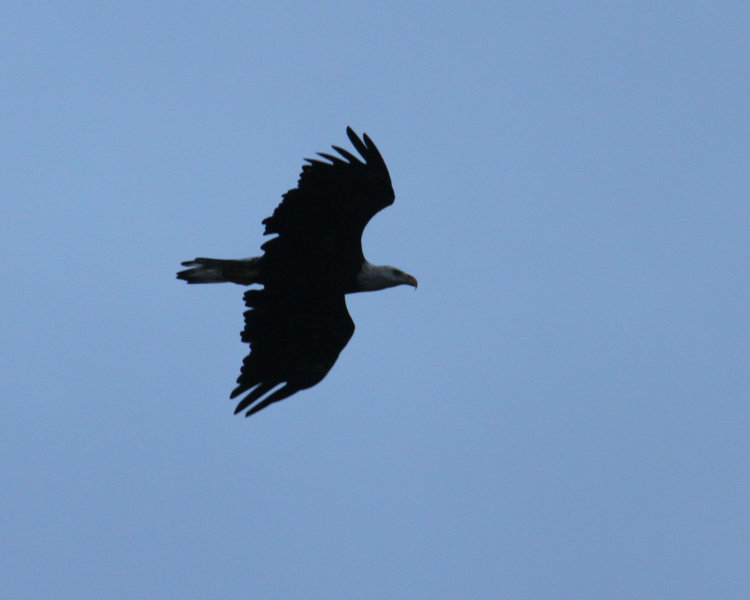
The eagles seemed to have thinned down quite a bit now, though I suspect that once the ospreys migrated back into the area and began nesting, the competition caused the eagles to shift to different areas – or their own nesting may have been responsible, choosing nest sites in thicker woods farther from people. We glimpsed them a couple of times, but only at a distance.
Continuing the theme of feather damage, we have an osprey (Pandion haliaetus):
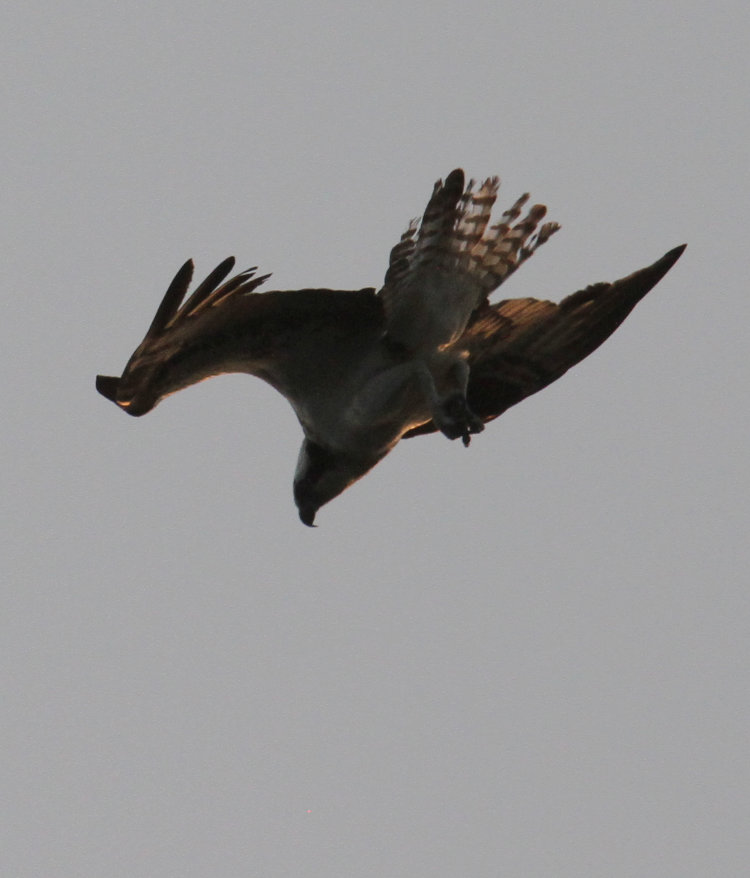
This was as close as any osprey came to actively hunting where we could see them, dropping into a stoop for a few moments before abandoning it as its prey went deeper (or revealed that it had a club.) Look at those tail feathers, though – that’s not from molting, but what it is from, I can’t say. The morning light was semi-cooperative at least.
At another location, I saw a head peeking up over the edge of the boat ramp, and so we stalked it carefully for a minute.
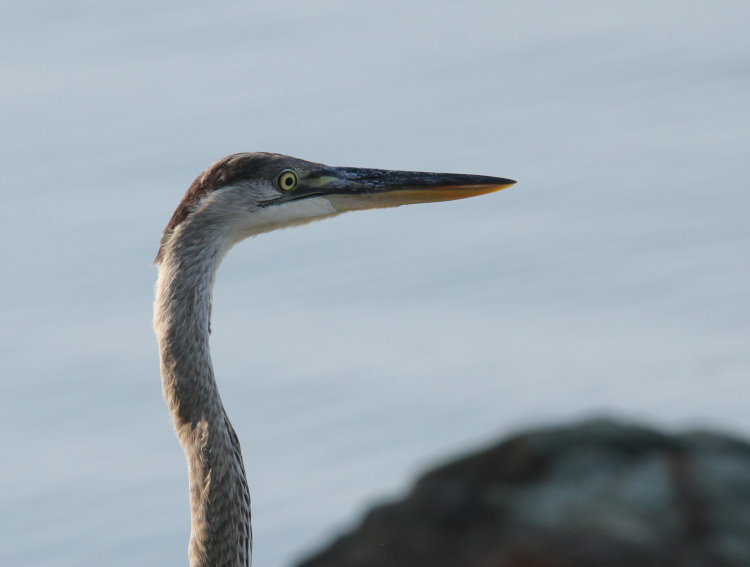
In the long lens, I was a little suspicious of that coloration, and subsequent full-body shots confirmed it: this is a juvenile great blue heron (Ardea herodias herodias,) this year’s brood – the brownish hue and the stippling are good indications. We managed to maneuver around for a better view before it spooked off:
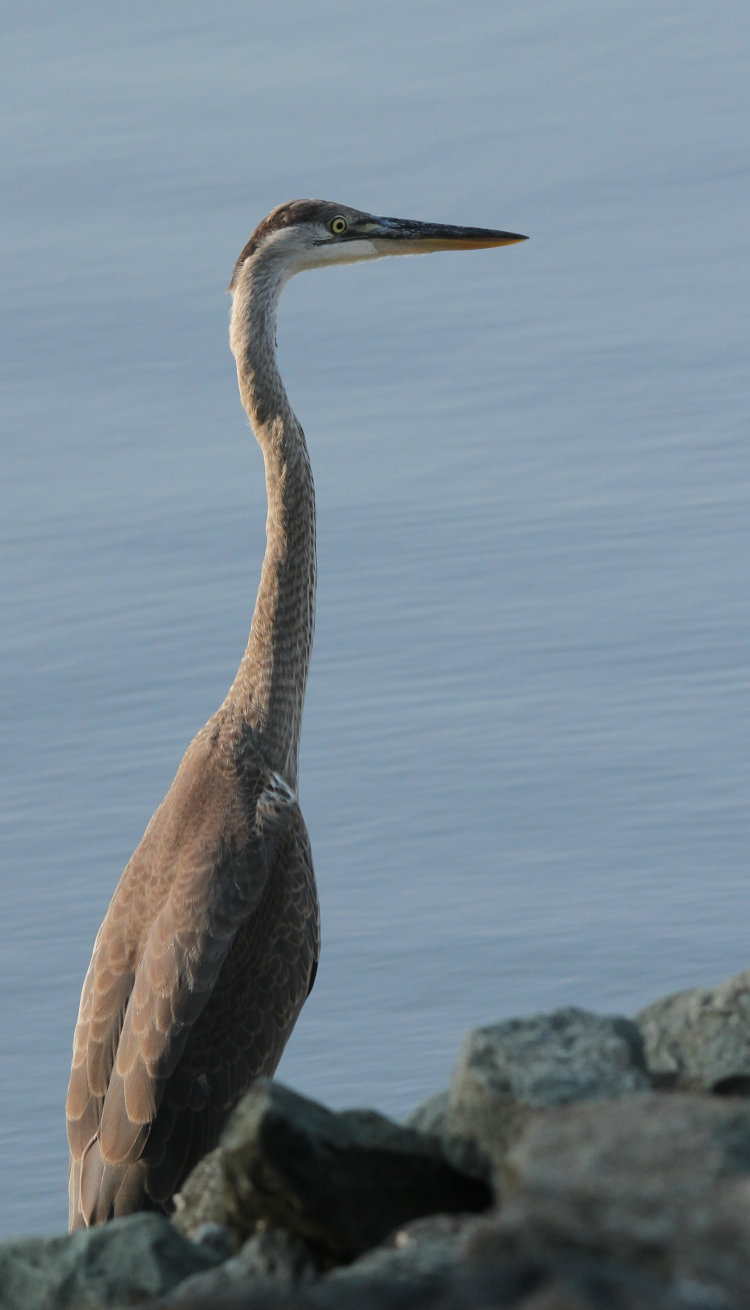
This is only the second first-year heron that I’ve seen, or at least that I realized I’ve seen – at even a moderate distance, the evidence may be indiscernible. And I have yet to find a nest anywhere within decent shooting distance – I found a couple, last year, but they were hundreds of meters away, so far that atmospheric haze would soften the images, with no apparent way of getting closer. I’ll keep looking, though.
A short while later, another interesting specimen made a quick appearance.
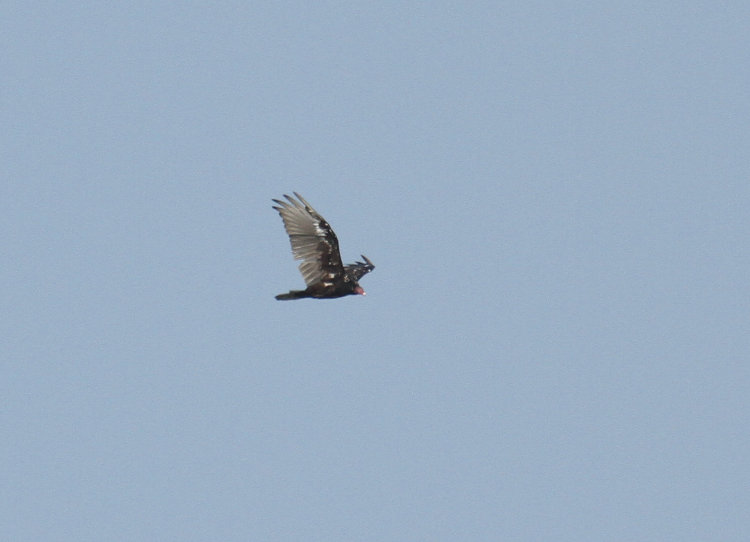
This one was way off, so even at 600mm it was quite small in the frame. It’s clearly a turkey vulture (Cathartes aura,) but I’ve never seen one with any white at all in the feathers, so I was assuming that this is another first-year example. But the Cornell site doesn’t seem to agree: they list the juveniles as having a grey head (though immatures will go back to pinkish red like the adults,) and give no indication of piebald coloration like that seen here. So I’m again at a loss as to what we’re seeing – if that’s feather damage, it’s a lot of it.
But, another confirmed juvie was in evidence:
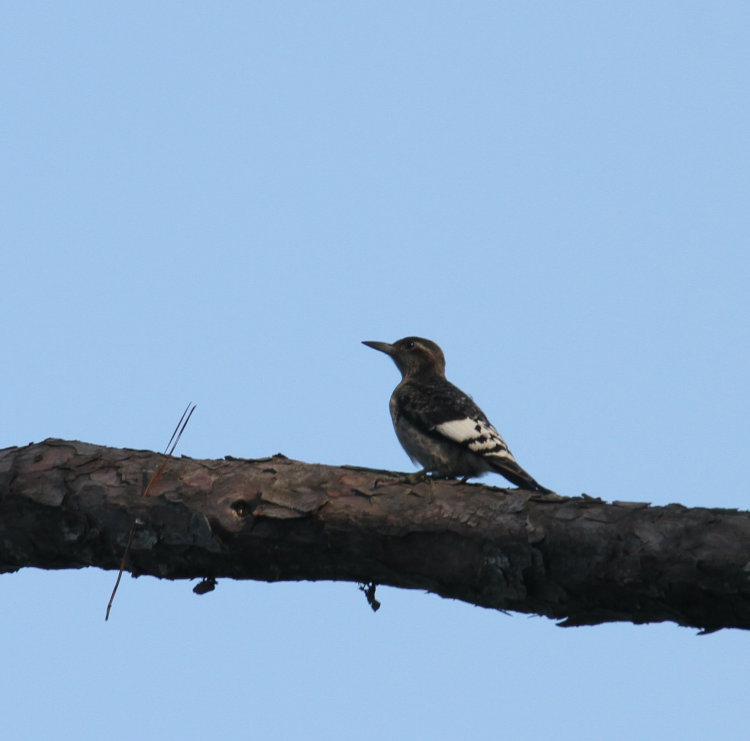
That’s definitely a juvenile red-headed woodpecker (Melanerpes erythrocephalus,) and I’ve watched the plumage change after the first year so I’m positive this is this year’s brood. Spotted when I heard a woodpecker drumming nearby, it flew off after a moment and a pair of adults took its place on the same limb, though they did not show any signs of recognizing the juvenile, much less feeding it.
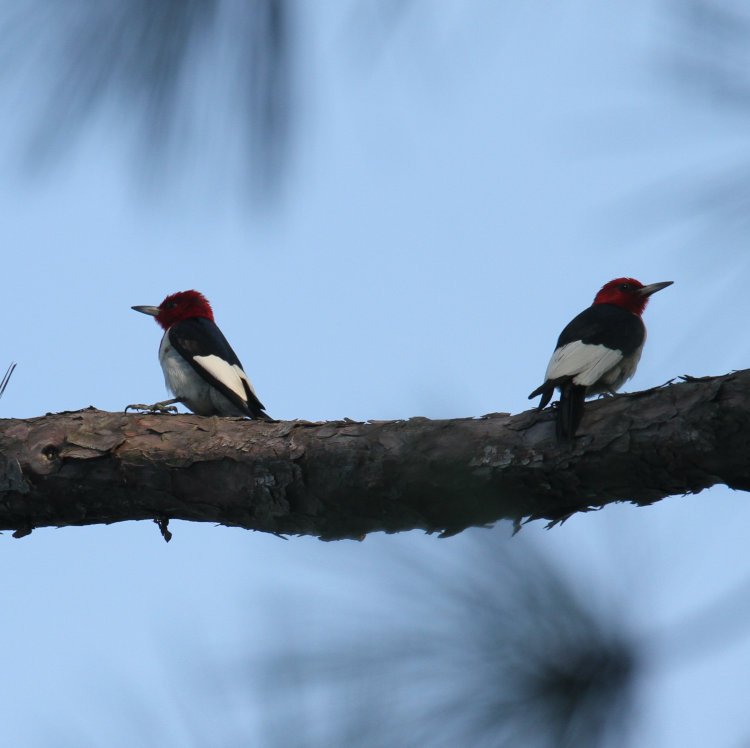
They were silent, and sat idly together for a few moments, then one flew down to a dead tree and revealed a nest hollow, disappearing inside.
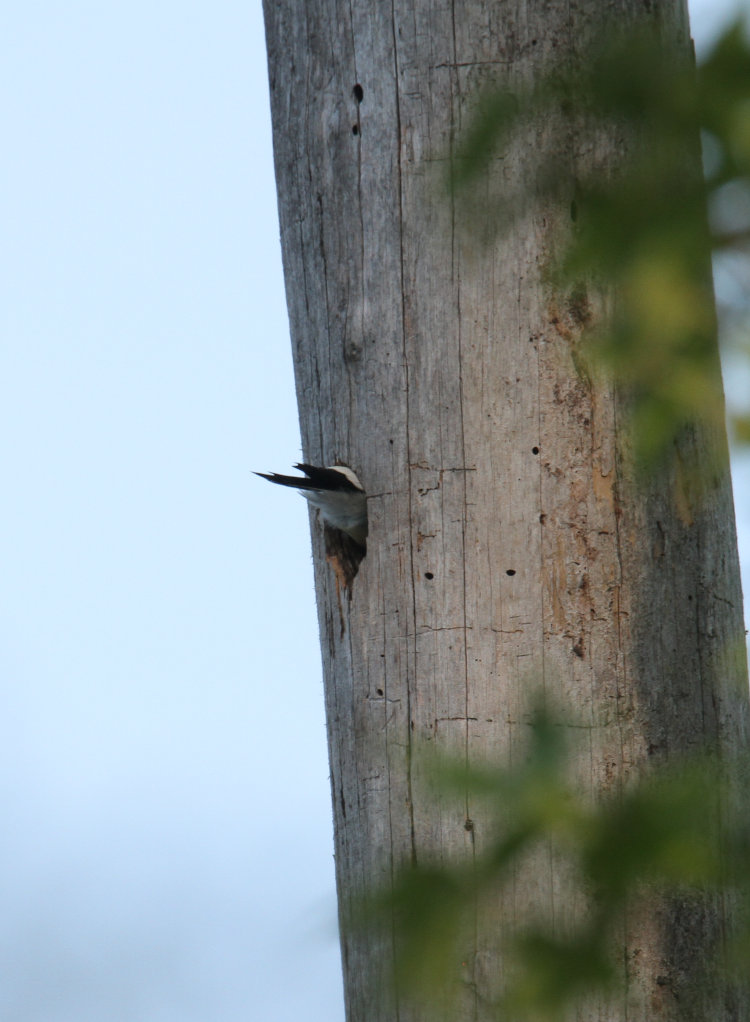
Notably, this is the exact same dead tree that hosted at least two woodpeckers nests two years ago, but split and lost half of its length late last year, right below where the nests had been. It’s still a good candidate given its nature and type of wood, but it also may not last a whole lot longer. I watched this nest opening for far too long, getting a bit stiff and achey holding the long lens on target, but the adult never re-emerged from the hole, so I’m assuming that she has eggs in there, or will very soon anyway. There’s not a lot of point in returning too soon, not until the young have hatched and feeding behavior begins, but I do want to start monitoring this nest again – not sure how well I’ll be able to, given how much is scheduled for the next two months, but we’ll see I guess.




















































